ANSELM KIEFER – DER FRUCHTBARE HALBMOND / LA MEZZALUNA FERTILE – LIA RUMMA, MILAN
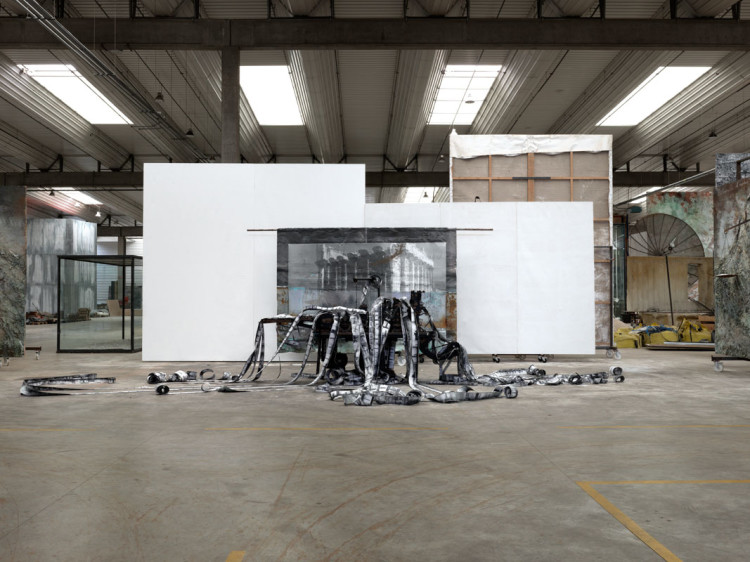
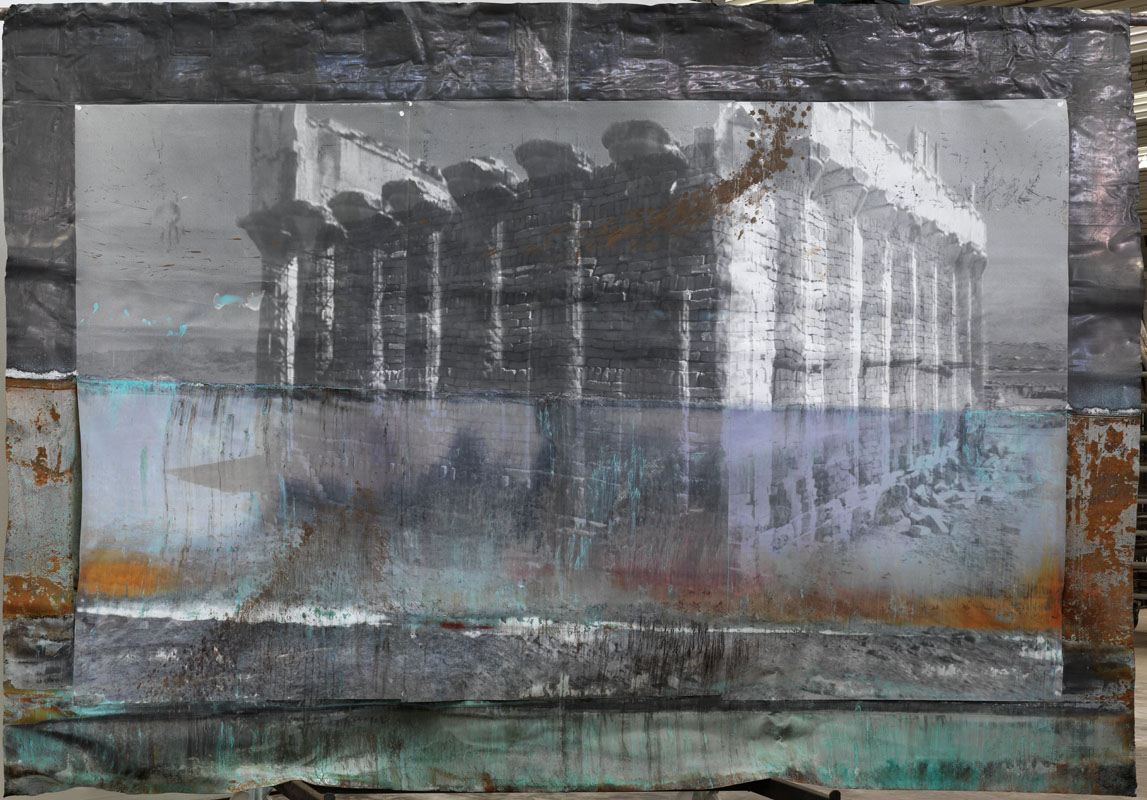
ANSELM KIEFER
Der fruchtbare Halbmond / La Mezzaluna fertile
opening: Saturday, September 15, 2012 – 5 – 8 pm
from September 15, 2012 to October 15, 2012
gallery hours: Tuesday- Saturday 11am – 1.30pm / 2.30pm – 7pm
Lia Rumma, Via Stilicone, 20154 Milano – www.liarumma.it
“What is history? History does not exist in an objective manner. It is purely subjective. It is in the hands of artists, as it was in the hands of God in Genesis. It is that thing which must, in the frst instance, be given form. What does the artist do? He draws connections. He ties the invisible threads between things. He dives into history, be it the history of mankind, the geological history of the Earth or the beginning and end of the manifest cosmos. For science and politics, art has no tangible use, and yet without art there is nothing. Whether we are blind to the artist’s works and the poet’s words remain unread, we know that when all is cast to the wind, art will go on.
Anselm Kiefer, 2011
Galleria Lia Rumma in Milan is opening its new exhibition season on September 15, 2012 with Der fruchtbare Halbmond / La Mezzaluna fertile, an exhibition of works by German artist Anselm Kiefer.
A stunningly imaginative, eloquent project which reveals an extraordinary wealth of underlying crossreferences, with all that they evoke and the diversity of artistic means used to express them.
Once again, with his boundless creative tension, Kiefer “dives into history” and plunges his eye – his, as well as ours – into civilization’s birthplace, the strip of land that stretched from Ancient Egypt all the way to Mesopotamia. His research is not inspired by nostalgia but rather by the need to question that world, with its kingdoms and cities, and the fragile material of its architectures. In the structure of the painting at the second foor, and in the book’s images, appear ruins and the remains of ancient buildings: Kiefer brings back fragments of the past for our thoughts’ use. What falls is neither forgotten nor set aside, but becomes that still-open place where future knowledge is built, and where East and West can come together.
The three works named after the Fertile Crescent clearly reveal the artist’s extraordinary ability to capture and give new life to the energy that bursts forth from that Babelic world together with the value acquired by dispersion and chaos.
Further confrmation of this can be seen in the spellbinding sculpture Bavel Balal Mabul, which opens the exibition: an old printing press from which leaden tongues emerge, racing off in all directions, generating an endless, unstoppable echo of images depicting architectural constructions and towers. Some key episodes of the Book of Genesis – the Tower of Babel, the confusion of languages, the Flood – are onomatopoeically summed up in the title of the sculpture and offered quite simply as paradigms of creation, of the birth of language and of the wealth of difference.
Yet while the artist’s task is also to “draw connections” and “tie the invisible thread between things”, the works in the new series, The Shape of Ancient Thought, conjure up syncretic understandings between time and thoughts that are only apparently far removed. The affnities between pre-Socratic Greek philosophy and Hindu wisdom, as investigated by Thomas McEvilley in his 2002 essay, acquire form in the process of electrolysis that the artist frst experimented with during his solo exhibition at Fondazione Vedova in Venice in 2011. The works appear as curtains made of lead – the material par excellence of Kiefer’s artistic workshop – on which photographs of Greek and Indian temples are blurred together by the effects of chemicals. This creates an absolute circularity between the energy that transforms matter and memory, which is the
incandescent substance of history and of human nature.
Allusions to the lexicon of alchemy also appear in The Mystery of the Cathedrals, the artist’s homage to the feeting fgure of Fulcanelli, who in 1926 wrote one of the key texts for the interpretation of the Great Work.
Anselm Kiefer was born in Donaueschingen, Germany, in 1945. He worked in Buchen, Germany, until 1993, when he moved to Barjac, France. Since 2007 he has lived and worked in Paris. His works are on show in the world’s leading museums and are included in the most prestigious private collections. In October 2007 three of his works entered the Louvre collection. In 1999 he received the Praemium Imperiale Award from the Japan Art Foundation in Tokyo and in 2008 the Peace Prize of the Frankfurt Book Fair, the frst time it was awarded to an artist. In 2010 he was granted the Chair of Création Artistique at the Collège de France.
Anselm Kiefer held his frst solo exhibition at Lia Rumma in 1992. Since then their partnership has grown ever stronger, reaching a crowning point with the creation of the Seven Celestial Buildings, the permanent installation which the Hangar Bicocca of Milan opened with in 2004.
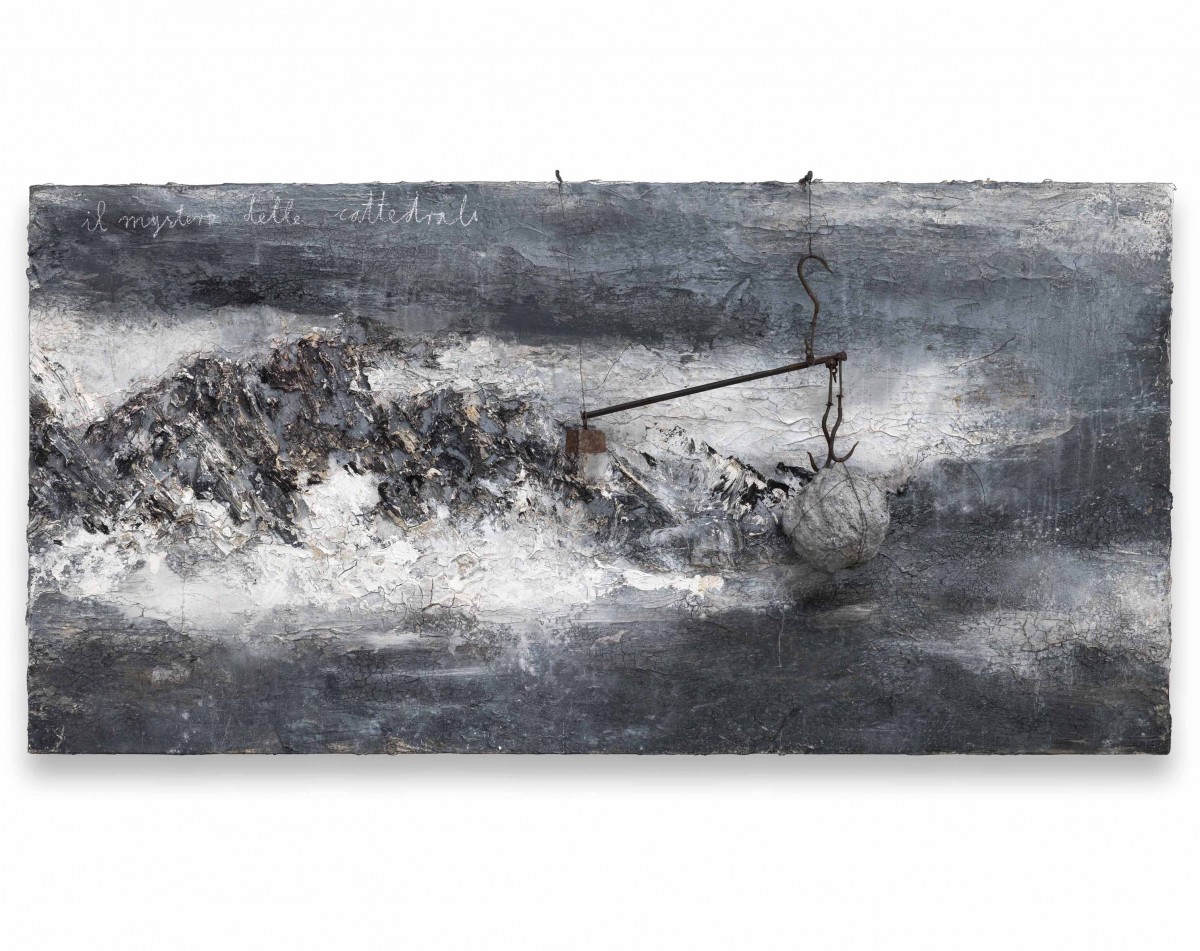
ANSELM KIEFER
Der fruchtbare Halbmond / La Mezzaluna fertile
inaugurazione: sabato 15 settembre 2012, ore 17.00 – 20.00
dal 15 settembre al 15 ottobre 2012
orari galleria: martedì- sabato ore 11.00 – 13.30 / 14.30 – 19.00
Lia Rumma, Via Stilicone, 20154 Milano – www.liarumma.it
“Che cos’è la storia? La storia non esiste in modo obiettivo. È puramente soggettiva. È nelle mani degli artisti, come lo era nelle mani di Dio nella Genesi. È ciò cui, innanzitutto, si deve dare forma. Che cosa fa l’artista? Disegna connessioni. Tesse l’invisibile trama tra le cose. Si tuffa nella storia, sia essa la storia del genere umano, la storia geologica del pianeta o l’inizio e la fne dell’universo conosciuto. Per la scienza o la politica l’arte non ha un uso tangibile; eppure, senza l’arte non c’è nulla. Che siamo indifferenti al lavoro degli artisti, o che le parole del poeta rimangano non lette, sappiamo che quando tutto sarà fnito, l’arte continuerà.”
Anselm Kiefer, 2011
La Galleria Lia Rumma di Milano inaugura la sua nuova stagione espositiva il 15 settembre 2012 con la mostra Der fruchtbare Halbmond / La Mezzaluna fertile, dell’artista tedesco Anselm Kiefer.
Un progetto che si presenta immaginifco ed eloquente per la molteplicità e la ricchezza dei rimandi sottesi, per quel che evoca e per la eterogeneità dei mezzi linguistici con cui si manifesta.
Ancora una volta Kiefer, nella sua inesausta tensione creativa “si tuffa nella storia” e immette lo sguardo – il suo, il nostro sguardo – là dove la civiltà è nata, in quel lembo di terra che dall’antico Egitto si estendeva fno alla Mesopotamia. Non è la nostalgia ad animare la sua ricerca, quanto il bisogno di interrogare quel mondo, i suoi regni, le sue città e la materia fragile delle sue architetture. Nella struttura della grande opera al secondo piano e nelle immagini dei libri appaiono vestigia di antichi edifici: Kiefer restituisce frammenti di passato all’uso dei nostri pensieri. Ciò che precipita non viene dimenticato, messo da parte, ma è luogo ancora aperto di costruzione del sapere futuro e di confronto tra Oriente e Occidente.
Appare chiara la straordinaria capacità dell’artista di catturare, rinnovandola, l’energia che si sprigiona in quel mondo babelico insieme al valore assunto dalla dispersione e dal caos.
Ne è ulteriore testimonianza la suggestiva scultura Bavel Balal Mabul, che apre la mostra: una vecchia macchina tipografca dalla quale fuoriescono lingue di piombo che corrono in ogni direzione, generando un’eco prolungata e inarrestabile di immagini di costruzioni architettoniche e di torri, ancora. Alcuni degli episodi chiave del Libro della Genesi – la Torre di Babele, la confusione delle lingue, il diluvio – sintetizzati onomatopeicamente nel titolo della scultura, si offrono come paradigmi della creazione tout court, della nascita del linguaggio e della ricchezza della differenza.
Ma se compito dell’artista è anche “disegnare connessioni”, “tessere l’invisibile trama tra le cose”, i lavori della nuova serie The shape of ancient thought, evocano sincretiche intese tra tempi e pensieri solo apparentemente distanti. Le affnità tra la flosofa greca presocratica e la sapienza indù, indagate da Thomas McEvilley in un saggio del 2002, prendono forma attraverso quel processo di elettrolisi sperimentato per la prima volta dall’artista in occasione della personale veneziana presso la Fondazione Vedova nel 2011. Le opere si presentano come velari di piombo – materiale per antonomasia del laboratorio artistico di Kiefer – su cui immagini fotografche di templi greci e templi indiani si confondono sotto gli effetti dell’azione chimica, in una assoluta circolarità tra energia che trasforma la materia e memoria, sostanza incandescente della storia e della natura umana.
Al lessico alchemico allude anche Il mistero delle cattedrali con cui l’artista celebra la sfuggente figura di Fulcanelli, autore nel 1926 di uno testi chiave dell’interpretazione della Grande Opera.
Anselm Kiefer nasce nel 1945 a Donaueschingen, Germania. Fino al 1993 lavora a Buchen, Germania. Nel 1993 si trasferisce a Barjac, Francia. Dal 2007 vive e lavora a Parigi. Le sue opere sono esposte nei più importanti musei del mondo e nelle più prestigiose collezioni private. Nell’ottobre del 2007 tre dei suoi lavori sono entrati a far parte delle collezioni del Louvre. Nel 1999 ha ricevuto a Tokyo, dalla Japan Art Foundation, il Praemium Imperiale Award e nel 2008 il Peace Prize della Fiera del Libro di Francoforte, assegnato per la prima volta ad un artista. Nel 2010 gli è stata assegnata la cattedra di Création artistique al Collège de France.
La prima personale di Anselm Kiefer da Lia Rumma risale al 1992. Da allora, la collaborazione si è sempre più consolidata, raggiungendo uno dei suoi momenti apicali nella realizzazione dei Sette Palazzi Celesti, installazione permanente con cui nel 2004 l’Hangar Bicocca di Milano ha inaugurato le sue attività.
Position the cursor on the images to view captions, click on images to enlarge them.
Posizionare il cursore sulle immagini per leggere le didascalie; cliccare sulle immagini per ingrandirle.

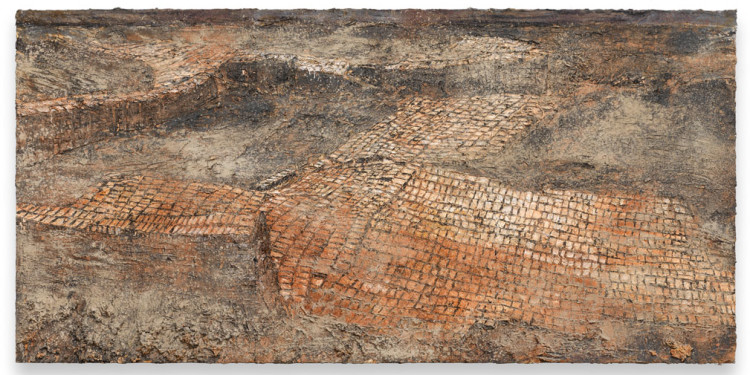
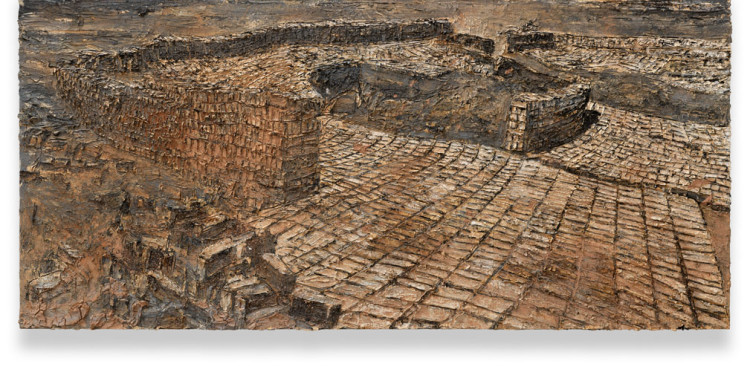
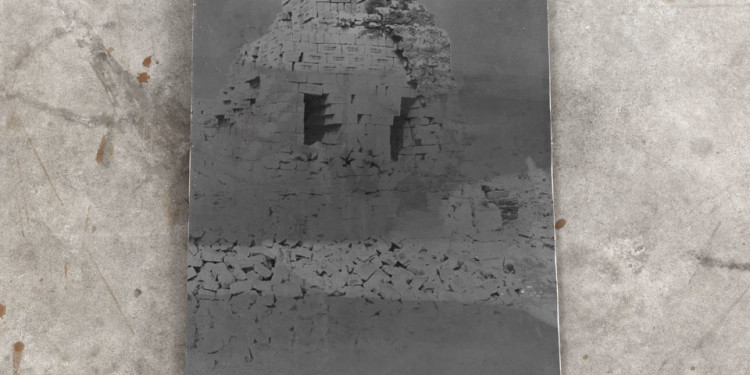
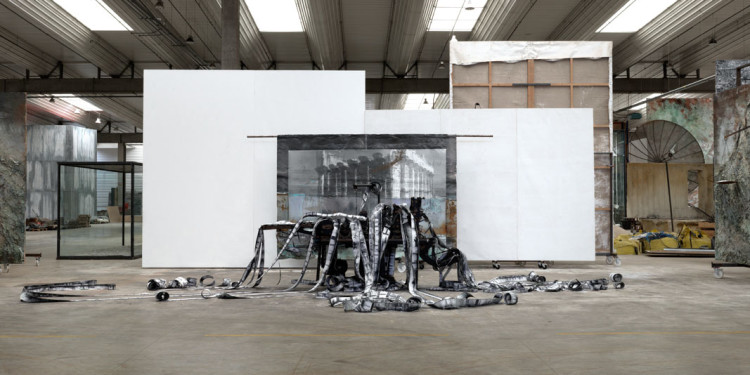
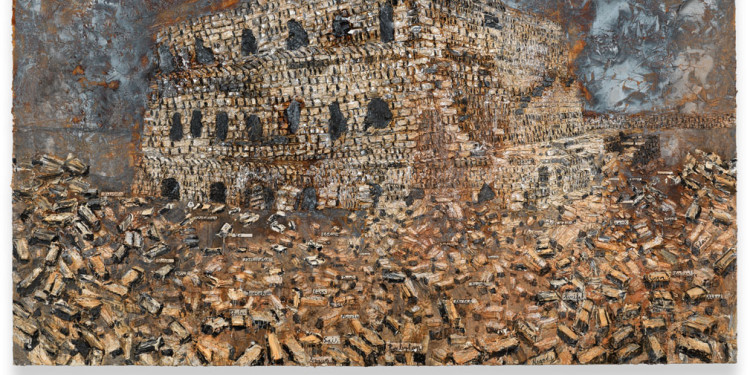
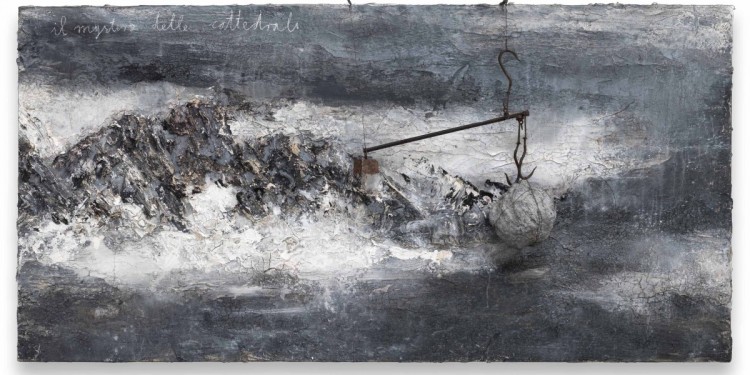
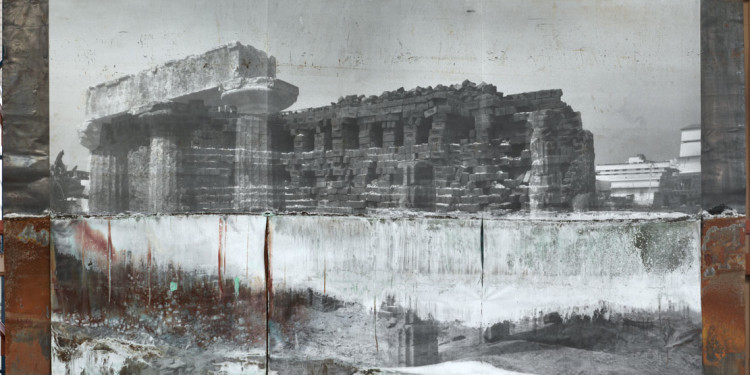
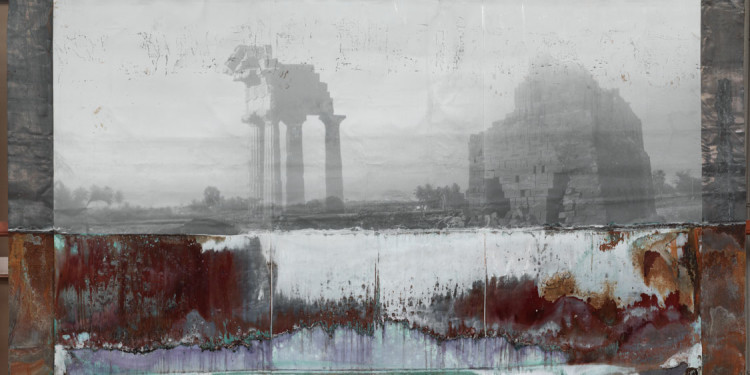
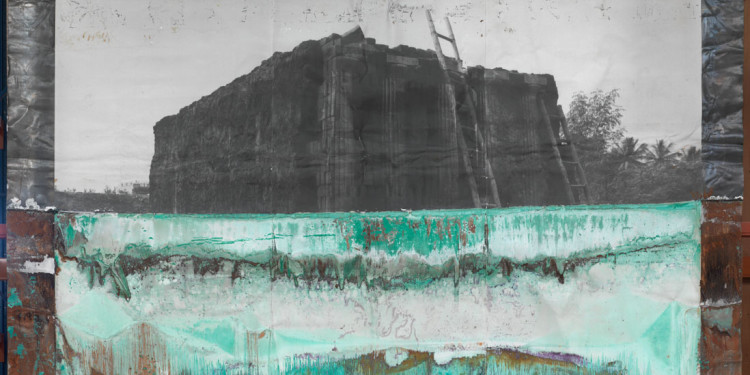
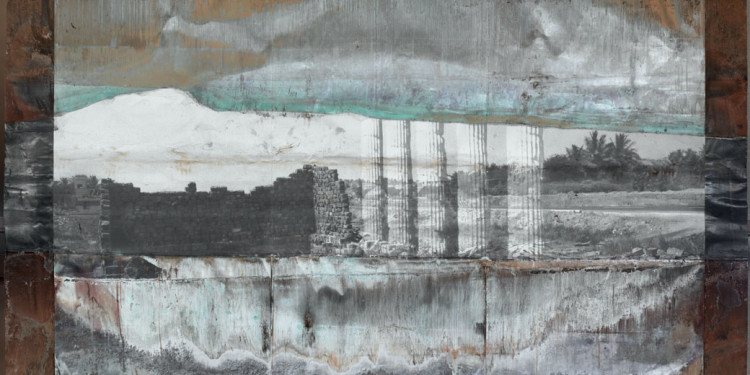
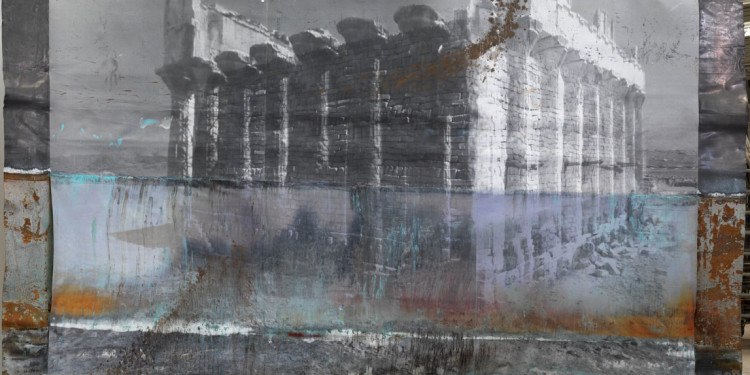
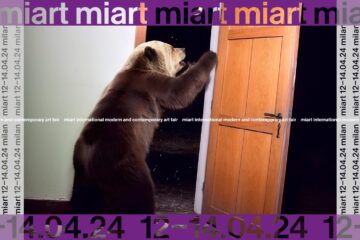
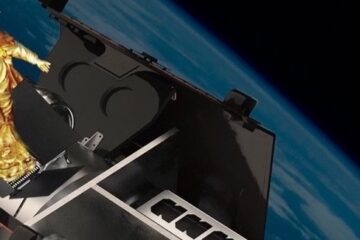
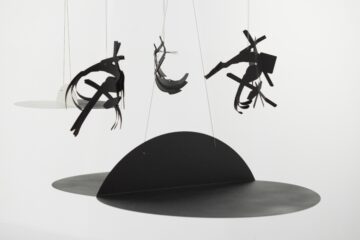
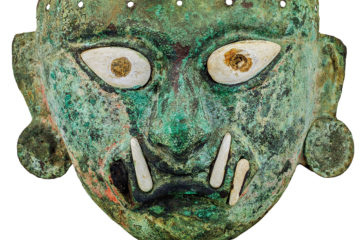

No Comment